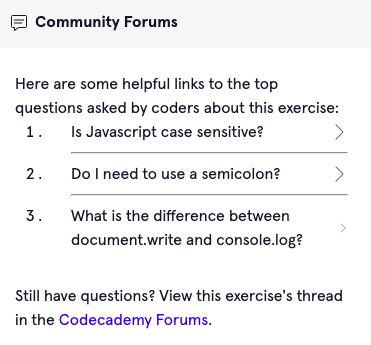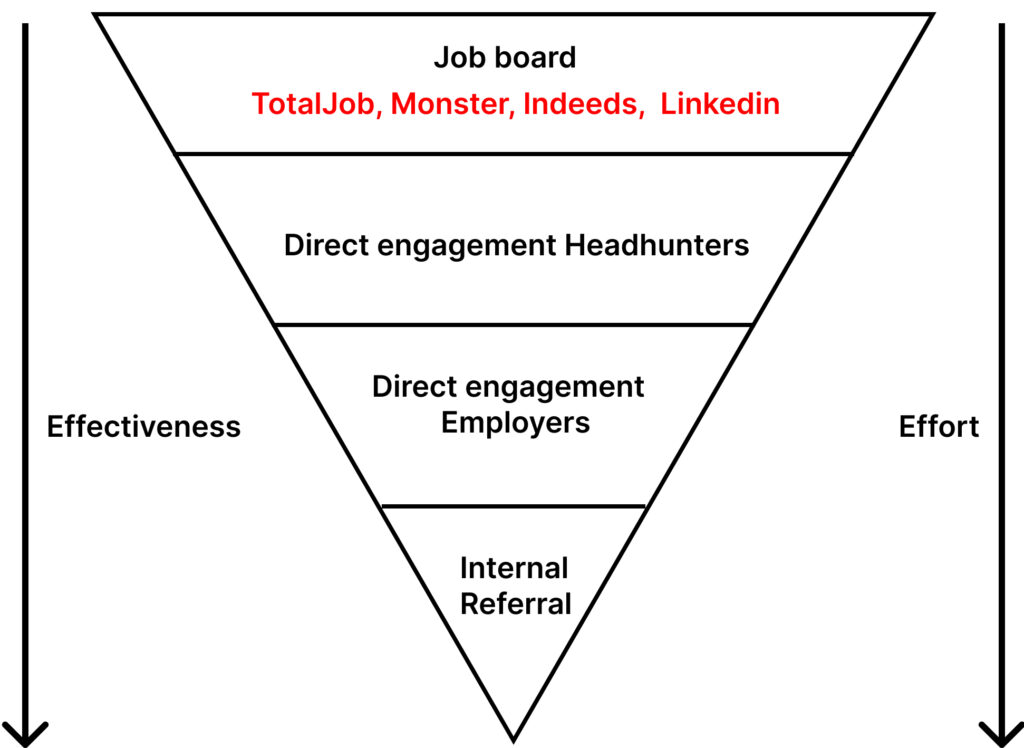One of the beauties of a tech career is no prior knowledge is required. Having a computer science degree will put you ahead but not by a mile. The tech world is an extremely fast pace industry and being willing to learn and invest in your own time is a trait that will propel you to the top in a short period of time. New language features are added continuously. Approaches change along with the landscape. Hence the industry is extremely accommodating when it comes to hiring self-starter.
[– TODO: Author to add education is not required –]
[– TODO: Also add having an education –]
Getting started in something completely new is usually daunting and you will most likely be lost with a sea of information. In the world that we are in information is fragmented and requires a lot of research and planning. Sometimes tutorials overlap and the content is usually for beginners or for experts. Content striking the middle ground is a rare find.
[Add TLDR for step 1 – end]
Step 1. Ask yourself the why

We must live life with a goal, and a goal will take us to a high we never imagined we could achieve. This vision of yours of where you are going to be in the next 6 months, year or even decade will be your guide no matter up or down.
Before diving any further into this potential tech dream. Pause for a moment and really think hard, “Why tech?”. You could be intrigued, want a career change, want the magical salary or even want to be a digital nomad working from all over the world. All of these are valid reasons and you must have one before you start. Back when I started out my reason was feeling stuck in my career and felt extremely lost. I wanted a house, and move away from home with Kayleigh, my partner, I was concerned about our future with my career stagnating and my university education not paying off. My goal at the time was to hit a 6 figure salary at my 30 and I was 23 on a £18,000 salary working in Boots. I have stuck to this goal ever since. The bonus for me is I quite enjoy what I am programming.
Step 2. Trial the job
Once you have persuaded yourself of a tech career maybe it’s for you, now would be a great time to give it a go. Numerous code academies have taken off since my time and most of them offer content covering the crux of programming at almost completely zero cost to you. Almost most providers offer some form of live coding challenges with immediate feedback covering the basics from settings variables to writing reusable functions. Going through these challenges should offer some insight into our day-to-day and if they really are something you are happy to do for the next decade or so.
- Code Academy – Coding Fundamentals
- Stack Overflow – Researching
- Pluralsight – Studying
- Udemy – Studying
- LeetCode – Optimisation
Writing code – Code Academy
Code Academy has been my go-to favourite at the very beginning of my career. They offer the best learning experience with clear explanations and real-time feedback. One of their best features is the online forum where all students come together to collaborate on the challenge.

The best way to learn is to be the teacher of a subject we don’t know. This forces our mind to really understand the concepts in our brain and lock in our long-term memory where it will pop up just when we need it the most
I would recommend you to start with their beginner course ‘Learn JavaScript’, ‘Learn JavaScript: Fundamentals’ and ‘Learn Intermediate JavaScript’. Javascript is a great first language for beginners as it’s extremely versatile and relatively straightforward to learn. It also doesn’t have the baggage of other languages that would create a lot of noise and impede your progress.
Once you have gotten the gist of programming It would be a good time to look into their SQL course ‘Learn SQL’. SQL is an extremely common database language that exists in almost every company.
Programming and database languages are our bread and butter. It is an integral part of what we do. As you go through the coding exercises you are effectively a software developer.
(Lately, their UI seems to have changed quite drastically with numerous obstacles added to divert users to paid subscriptions. The free tier is really enough to get you started, once you get to their core offering their courses will really shine.)
A PhD in research – Stack Overflow
Researching is a second nature of a developer. Almost all of the problems we faced would have been answered by someone somewhere on the internet. Since the tech world is so diverse, it’s extremely common that us forget some part of a language. Researching and determining the most appropriate solution to copy are what differentiate a junior and senior developer.
The key to finding this information is searching for the right search phrases. There are usually multiple approaches:
- Search for the exact error message with additional information:
- Search: ‘Object Reference Not Set to an Instance of an Object‘
- Search for a high-level concept:
- Search: ‘Writing a function in javascript‘
- Search for a problem:
- Search: ‘Failed to update a read-only collections‘
- Utilise additional search engine features:
- Search ‘Calculator site: doc.microsoft.com’
There are many more ways to find information online and the most common place you will end up is Stack Overflow. It is one of the most visited websites for us and many across many industries almost all kinds of professions. It is effectively a crowdsource Q&A website and it is on you to filter out all of the noise and cherry-pick the answers.
finding the right information
Your new Youtube – Pluralsight and Udemy
On top of coding and researching, we will have to continuously top up knowledge with self study. The landscape we operate in is improved all of the time. What we know will eventually be superseded e.g. Framework, approaches and patterns. However concepts and fundamental never changes and this is an area we should focus our time on. We also operate in an extremely constrained environment e.g. time, stakeholder interference, external dependencies. Good understanding of the overall landscape will really set you apart from your colleague, you will also make a more informed choice when it comes to trade-offs and knowing all of the options will guide you in making the best decision.
Udemy – Udemy offers
Pluralsight – The material from Pluralsight are considerably more technical than some of the other providers. It covers fundamentals extremely well. You are also more likely to find tech celebrities who designed some of the languages.
YouTube – YouTube’s offers free content on tech
Be different – LeetCode
Continuous learning is a must and on top of watching video LeetCode is a very fun place to be. It is a raw programming arena where you will only be using basic constructs to tackle algorithms. It is backed by a very strong community and supports many programming languages. You will definitely be mentally challenged by some of the exercises and at the same time, it would be extremely rewarding if you have an elegant solution that is considerably quicker than the majority. The usual metrics are execution speed and computer memory consumption. This is an area aspire senior developers should be familiar with however in modern-day computing, this is becoming less relevant. However, it is still fairly critical in some of the older institutes and some finance tech which heavily relies on the network and execution speed to outperform their competitors.
LeetCode is also the go-to place for interview prep. It is extremely common for financial institutes to test candidates in live sessions as part of the initial phase of their interviewing process. Getting yourself familiar is extremely beneficial.
Step 3. Figuring out the Syllabus
Once you have trialled the jobs and still think this is something for you. The next step is to derive an appropriate Syllabus, this will form the basis of your learning in a S.M.A.R.T way. The syllabus will keep you on track with your learning and tell you and validate your progress against time. A very simple Syllabus could look like this.
My Simple Syllabus:
- Website (4 weeks)
- Complete Code Academy Course; ‘JavaScript fundamentals’ (1 week)
- Complete Code Academy Course; ‘Core JavaScript’ (1 week)
- Complete Code Academy Course; ‘HTML fundamentals’ (1 week)
- Complete Code Academy Course; ‘CSS fundamentals’ (1 week)
- Server-side (4 weeks)
- Complete Pluralsight Course; ‘Java Fundamentals’ (2 weeks)
- Complete Pluralsight Course; ‘Java Framework Fundamentals ‘ (2 weeks)
- Deployment (2 weeks)
- Advanced Topics (4 weeks)

Being S.M.A.R.T is extremely critical in your plan. You would want to pace yourself in your learning for it to be enjoyable as well as make sure you are on track. Scope creep is something we should all avoid, this is also fairly common in software development and it diverts our attention from what we really need to get done.
Deriving a Syllabus in an unknown territory could be quite daunting. Please visit What you need to Learn for a more detailed breakdown of the key areas to study.
Step 4. Create a Linkedin Profile
Linkedin will be your new favourite social media platform. It is effectively your Facebook for your professional work. It will attract internal recruiters and headhunters. Having a well-presented and up-to-date Linkedin Profile will set you apart from others when being scouted. Interviewers also tend to browse through candidates’ Linkedin profiles to look for questions, discrepancies and other achievements that didn’t fit on your CV.
Employers usually post Job advertisements across multiple websites e.g. TotalJobs, Indeed and Linkedin is one of them. Application via Linkedin is considerably more straightforward as you could bypass most of the irrelevant steps e.g. persona Q&A, and cover letter, by applying with your profile directly. This will cut through all of the irrelevant steps e.g. persona Q&A, cover letter. You will also be able to reach out to more employers with considerably lesser effort. Some employers also have direct integration with Linkedin for prefilling part of their application forms.
If you have a particular company in mind, the optimal strategy would be to connect with engineers employed by that particular company and ask for an internal referral. The referer will usually be awarded a referral bonus, which makes it a win-win for both of you. This usually skips a few of the preliminary stages and companies usually favour referral as they prefer someone connected as opposed to leads generated in the wild.
Finally, you could also export your Linkedin profile in PDF format for use as a CV.
Go ahead and create one! It is a must in this digital age.
Step 5. Update your CV
The structure, wording and presentation of your CV will define who you are to all of your prospects. Someone you never met will decide if they want you or not solely on this piece of document. The interviewer is usually swarmed with dozen of these CVs and they have gotten really good at only picking out useful information and discarding the majority of the information they deem irrelevant. This is extremely important to bare in mind when updating your CV. You want to be succinct and to the point. Everything on you wrote must serve a purpose e.g. Completing the hardest certifications in the industry. Really think hard about how the interviewer will interpret everything you write as you will want to keep this as short as possible and definitely no more than 1 double-sided A4 page.
The structure and styling of a CV usually vary and depending on the channel of application, sometimes CVs are standardised by software or the head hunter before reaching the interviewer. This helps the interviewers to spot the difference between candidates and pick up the best out of the bunch.
General Tips for writing your CV:
- Some of the standard sections you will find on a CV are; an introduction, certifications, experiences, links to your professional social media and possibly other charitable achievements.
- Something I have learned from a recruiter is always write your brief introduction in the third person rather than the first. The name will repeatedly appear
- Use standard format and style as much as possible (the tech industry is usually merit on experienced and certifications).
Step 5. Create a portfolio
Something headhunters and recruiter really loves to see are your work. This is especially true for aspiring to be programmers. The two key aspects recruiters when screening candidates are the ability to be self-taught and passion. Candidates really shine if they are able to demonstrate they spend their time learning and reasonable effort in doing the work. From my experience screening CVs usually only 1 out of 5 candidates put a web link to some of their work.
As part of your learning, I would highly recommend you create a website. It will supplement your CVs and could be distributed to recruiters on Linkedin. In most cases, web links are usually opened before any file attachment and the first impression really counts. Headhunters on LinkedIn are most likely to respond to candidates they believe are most likely to pass the HR screening of the client they represent.
Step 6. Approach Recruiters
Once you have learned the basics of programming, updated your CV and curated your portofolio from your learning. It’s the ideal time to start making applications. There are multiple approaches to job hunting and their effectiveness tends to scale with the effort required.

Job boards
Job boards are the most common website we start off with at the very beginning of our career it requires the least effort and it’s somewhat possible to apply for every job available in the desired sector. This is what most candidates do apply for 10 today, 10 tomorrow, and another 10 the next day until one comes through. Employers will usually sieve through a large number of applications with automated messages, and HR phone calls. Don’t fret, with this method the rejection rate is extremely high as suitable candidates could be filtered out unintentionally by their selection algorithm. The job ad could also be stale or it entirely doesn’t exist (Headhunters use this approach to enlarge their pool of candidates).
Direct engagement – headhunters
Personally, the sweet spot I find the most effective is direct engagement with headhunters. The simplest approach would be forming a professional connection on Linkedin, connecting and sending a succinct message to introduce yourself and the role you are looking for. This effectively forces your way into the money pool of candidates they hold dearly. Headhunters will use this initial impression to gauge your passion, confidence, and presentation and decide if they want to put you forward for the interviews they have available. These places are generally limited and they are cautious to ensure you are the most likely to be well-received by the recruiter over other candidates they have available. Headhunters are also likely to offer you a direct interview with another employer relatively quickly as long as they felt you have a good chance of landing them commissions.
Direct engagement – employers
Some companies frown upon headhunters and refuse to work with them, as they are notorious for causing high churn in the tech industry. The commission model and quality of the candidates they put forward is questionable. Some headhunters are known to approach their existing placements once their commission window has closed (the candidate passing probation) or 6-12 months. (Headhunters are generally paid 1-3 months of a software developer’s salary as a commission. Approx. £10,000 for a software developer with 2 to 3 years experience).
This makes directly approaching a team lead, the engineering manager on Linkedin extremely refreshing and effective. This cut through the mundane step of a cover letter, Q&A, etc, which are usually required as part of the application. Your application will also land on the HR desk vouched for by the person you engaged with. The chance of not getting an interview at this point is close to impossible.
Tech companies always have the capacity to absorb candidates but they may not openly advertise on the job market. By directly engaging with a person within the company who is actively involved in hiring you are most likely to get against other candidates to walk through that revolving door.
Referral

Step 7. Practice Interviews
General Tips
- Do not bad mouth any of your previous job experiences.
- Be positive
- Tell them what you have learned
Step 8. Dont walk this road alone

On top of following all of the steps above the most effective way to get yourself into tech is via a tech agency. Most of them consist of a training and recruitment division depicting a very similar path to this article. These insituties usually have placement contract with top tier employers across many sections and will guide you to popular technology stacks to learn. However they will require a 6-9 months almost full time commitment from training till finding a placement. The first two years earning potential are capped as part of your training agreement. Placement are not garanteed and you will be able to exit the contract once an agreed time period has elapsed once you have completed your training.
Training company falls into two categories and I have interviewed a few
Self funded training
Self funded trainings offer the best flexibility as you would have zero contractual obligations to the company. You will be able to work full time or part time at your discretion. This approach does require a considerable amount of discipline. You are likely to be given a syllabus curated by instructors with various subscription to different learning platform. It would be your responsibility to ensure you complete the syllabus to progress onto the next phase.
Back in 2015 I have paid Just IT* approx. £2500 for their ‘Professional Developer Programme‘. I was able to work full time in large part of the syllabus and eventually became part time to free up my schdule for attending interviews. My training span across 3 months. Consist of fundamentals, presentation training, portfolio creation and I was instructured to create an online CV and I was forwarded to their recruitment division.
This is the crux of my course:
- A promise of £21000 – £23000 starting salary.
- A Pluralsight subscription
- A syllabus of videos to watch on Pluralsight (Approx. 10 – 15)
- Live Webinar (Approx 3 – 5 sessions)
- 2 in-house lectures to create a portfolio website
- 1 in house CV workshop with their recruiters
- Interviews (Approx. 5 interviews, The recruiters are aware some of the interviews are irrelevant but encouraged me to do it anyway to give me the opportunity to practice my interviews)
- 2 Microsoft Exams (Optional)
Overall the course required self discplicne but offered considerably more flexibility where I am able to earn to support myself and the number of interviews acquired through this really helped me in securing my first role. In the end I managed to secure my own career via Linkedin.
Blood, sweat, and tears
Advantages:
- Flexible learning
- No earning cap for first two years
- No tie-in period
- You can decline job offers
- You can bypass them and apply to your preferred employer
- Ability to choose your stack (front end, back end)
Disadvantages:
- Must be a self-starter and happy to follow up with instructors and recruiters
- Their client base skew towards start-up
* Just IT courses are now funded by government.
Code School training
In the UK tech jobs are in fairly large demand, which has created an extremely favourable situation for individuals aspiring to work in the tech sector. Numerous employers has dropped to the requirement for a computer science graduate and code school has spawned promising both training and career opopportunity zip into single package.
Code school generally requires your full commitment contractually to ensure you are willing to invest an equal or even greater time than they do. They are usually office based meaning you could do all of your training away from your home with like minded individuals. Interviews could happen at any stage of your training and it could be cut short if you are able to score.
Just slightly after starting my Just IT training I also secured a place with FDM with the promise of deployment in HK, my home country. As part of the training contract I was explained their expectation on my comment, my first two years earning cap and my relocation allowance. Their office was cooperate based in in London Bridge with all candidate suited for lessons and training. The general vibe is more serious and it’s definitely a bonus for those looking to push themselves. Two weeks into my training I was told by my in-line recruiter HSBC HK is interested to setup an interview with myself and another member from the same group. However, I have decided to leave just before the end of my grace period with FDM.
The setup of my FDM experience:
- An open-ended contract
- Exit is only allowed once your training is finished but failed to secure a placement after a certain period of time.
- Downtime between placements is unpaid.
- Earnings are fixed at £23,000 for the first year and £25,000 for the second year (Oversea)
- Earnings are fixed at £21,000 for the first year and £23,000 for the second year (Domestic)
- Relocation allowances are provided
- Multiple career paths to choose from
- Business Analyst
- Software Developer
- Database Administrator
- Training will take approximately 6-9 months.
- Training is classroom based.
- Library facilities are available for self-study
- Learning is mostly in the Java stack (Likely due to their client’s requirement)
Overall my experience with FDM is positive but the financial commitment required could be overwhelming, unpaid training and capped earning, if you are supported by a familiy member then this maybe a good way to kick start your career
All that glitter is not gold
Advatanges:
- Structured learning
- Physical office for learning
- Learning with like-minded individuals
- Their client base is generally Enterprise (Banking)
- The ability to work overseas
- You could also be offered a different career path if they struggle to place you
Disadvantages:
- The syllabus focuses are fairly narrow
- You could be offered employers or locations are don’t like
- Earnings are capped for the first two years
- You could be stuck without a placement but unable to move on in life
- You may not receive a placement once finished your training
- Not allowed to job hunt on the side
- Monday to Friday attendance required for 6 months
- Unpaid until placement
Separate posts will be added to cover each section in detail.

What’s Taking place i’m new to this, I stumbled upon this I
have found It positively useful and it has helped me out
loads. I am hoping to give a contribution & assist other users
like its aided me. Good job.
It is the best time to make a few plans for the long run and it’s time to be happy.
I have learn this put up and if I may just I want to suggest you few interesting things or
suggestions. Perhaps you can write next articles referring to this article.
I want to read even more issues about it!